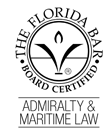Royal Caribbean Cruise Passenger Injury Case Passes Summary Judgment
 A Miami Federal Judge has ruled that a Royal Caribbean cruise passenger injury case can proceed to a jury. This case involves a fall in the Oasis of the Seas multipurpose auditorium. The passenger was participating in a Game Show organized by the cruise line. At one point, he was invited onto the stage. While making his way to the stage, the passenger fell claiming that he was not able to discern the twelve plus inch drop from the seating area to the stage floor. From this incident, the passenger filed a lawsuit in Federal Court alleging negligence and negligence design.
A Miami Federal Judge has ruled that a Royal Caribbean cruise passenger injury case can proceed to a jury. This case involves a fall in the Oasis of the Seas multipurpose auditorium. The passenger was participating in a Game Show organized by the cruise line. At one point, he was invited onto the stage. While making his way to the stage, the passenger fell claiming that he was not able to discern the twelve plus inch drop from the seating area to the stage floor. From this incident, the passenger filed a lawsuit in Federal Court alleging negligence and negligence design.
Royal Caribbean’s Motion for Summary Judgment
In order to prevail against a cruise line, the injured passenger must prove by a preponderance of the evidence that there was an unreasonable dangerous condition that caused the accident. The injured passenger must also prove that the cruise line knew or should have known of the dangerous condition. Royal Caribbean argued that the step was not dangerous as a matter of law, that it did not have a duty to warn of the step and that it was not involved in the design of the step. Royal Caribbean filed a motion for summary judgment seeking to dismiss the passenger’s injury case.
The Court’s Ruling
Dangerous Condition
Royal Caribbean argued that the step was not dangerous because within the three years prior to the passenger’s fall there were only five reported incidents relating to the stairs out of approximately 218,400 passengers who participated in the game show aboard the Oasis of the Seas. The passenger countered that evidence with expert testimony stating: (1) the entirety of the staircase was steeper, overall, than permitted by safety standards; (2) the variation between the steps leading to the floor, or stage, of the studio was excessive; (3) the absence of a handrail at the bottom of the stairs or step leading to the floor was in violation of safety standards; (4) the riser height of the final step itself was double the height of all the other steps leading down to the stage floor; and (5) the height difference was not discernable or conspicuous. Based upon this evidence, the Court found that it was for a jury to determine whether the step was dangerous.
Duty to Warn
The cruise line additionally argued that it had no duty to warn of the step as it was open and obvious to the reasonable person. The passenger presented evidence that the final riser leading to the stage floor was not visible as one descends the stairway, nor was the twelve-inch (or more) drop discernible because the lighting arrangement around the stairs and the last step, combined with distractions during the game would have also obscured the depth of the step down to the floor. The Court found that this evidence renders the duty to warn a question for the jury to decide.
Negligent Design
The Court, however, found that Royal Caribbean did not play a role in the step’s design and should not be found liable for any damages based upon the legal argument that the step was negligently designed.
Import of the Case
Motions for Summary Judgment test whether an injured passenger has enough evidence for a reasonable jury to find a cruise line liable for negligence. As shown above, expert testimony played a key role in establishing that the injured passenger was entitled to bring his case to the jury.












